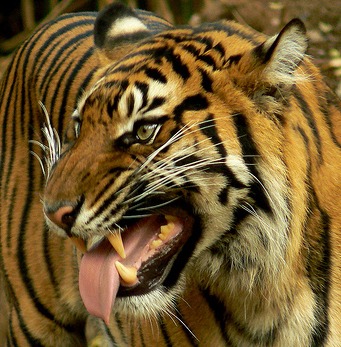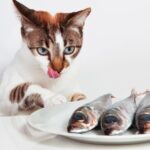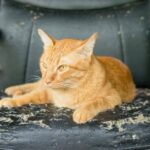Cats Guru, Flehmening In Cats – You may have noticed your cat sitting around with its mouth slightly open, making a curious sort of grimace during which it wrinkles its nose, curls its lips and appears to be concentrating hard.
This is known as flehmening, and is something that many carnivores, including cats such as the domestic cat, are able to do thanks to a special organ, known as Jacobsen’s organ, which is situated in the front part of the roof of the mouth.
What is it that causes the cat to make that strange flehmening grimace? It happens when a cat constricts its nasal chambers. This ensures that, when the cat inhales, it draws the particles of scent through a duct leading off the roof of the mouth into a special pouch, known as Jacobsen’s organ.
Do Wildcats also have Jacobsen’s organ?
Yes. Wildcats of all types have a Jacobsen’s organ. In fact, the organ is much more strongly developed in the big cat species such as the lion or tiger. The cat has an extra sensory organ, known as the vomeronasal, or Jacobsen’s, organ, which lies in the front part of the roof of its mouth.
It consists of a small pouch, which is fitted with receptor cells similar to the smell receptors found in the nose. Jacobsen’s organ is little understood, but it seems to be involved with the senses of both smell and taste simultaneously, enabling a cat to taste a smell, or smell a taste. Jacobsen’s organ does exist in humans, but only in a rudimentary way, which we don’t actually use.
A Taste For Other Cats

Flehmening is believed to bring the chemicals involved in certain odours in contact with Jacobsen’s organ, and this is thought to apply in particular to odours of a sexual nature.
Flehmening is most commonly observed in a tomcat, for example, when it smells a female on heat, though it is also seen in neutered males and females – as when smelling the anal region of an unfamiliar cat.
When flehmening a cat makes a strange grimace, during which it wrinkles its nose and curls its lip, suggesting that it finds the smell disgusting – though quite the opposite is, in fact, true.
Which mammals have a Jacobsen’s organ?
It seems that it is only humans and a few other primates that don’t have a Jacobsen’s organ, perhaps because we are less dependent on scent for hunting.
- The cat’s nose is especially sensitive to those smells that contain nitrogen. This is useful because it enables it to avoid food that is going ‘off , which is what makes it smell of nitrogen.
- Smell is one of the most important feline senses – much more than in humans.
- Flehmening can be best observed in a snake, which uses the action of its characteristic flicking tongue in order to ‘taste’ the smells on offer around it.







